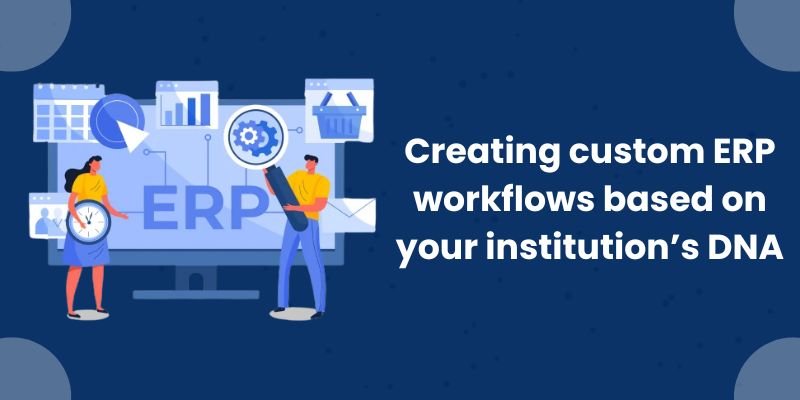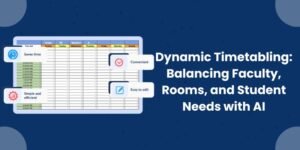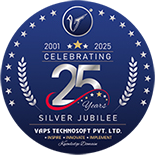In today’s fast-evolving educational landscape, institutions are expected not only to function efficiently but to do so in a manner that reflects their unique ethos and values. This sense of institutional identity—the distinct character shaped by culture, structure, and mission -should be mirrored in the digital systems that support daily operations. Yet, many educational institutions still operate within rigid, standardised ERP platforms that don’t reflect their specific workflows or educational models.
The result? Misalignment between software and real-world processes. This gap can lead to inefficiencies, delays, and disengagement across departments. That’s where custom ERP workflows come in—not just as digital tools, but as strategic enablers of operational alignment, administrative efficiency, and educational innovation.
Understanding Institutional DNA
Every school, college, or university is its own ecosystem. Its DNA includes more than academic models and governance—it’s about how decisions are made, how communication flows, how students are engaged, and how the institution positions itself within the larger educational landscape. These nuances demand digital systems that don’t generalise, but customise.
Standard ERP systems may attempt to digitize processes, but true digitization in education must go beyond simply going paperless. It must adapt to how your institution works—not the other way around.
Why Custom Workflows Matter
Off-the-shelf solutions are useful starting points, but they often require institutions to retrofit their processes to the system’s limitations. This can lead to:
- Redundant steps in routine approvals
- Poor data visibility due to mismatched reporting structures
- Frustrated staff working around the system instead of with it
Custom ERP workflows, on the other hand, are designed to reflect the institution’s real-life needs. They support process automation across departments while ensuring that the system evolves alongside the institution.
When implemented thoughtfully, these workflows:
- Reduce manual intervention and errors
- Improve staff productivity and accountability
- Enable more strategic use of resources
- Foster cross-functional stakeholder engagement
Real-World Applications
Let’s take a closer look at how tailored workflows create impact across core institutional functions:
- Admissions: Whether you use a holistic review process or rely on exam-based criteria, custom workflows allow separate pathways for different applicant types. This supports differentiated communication, submission timelines, and document reviews.
- Faculty workload management: In interdisciplinary setups, teaching, research, and mentorship commitments often overlap. Custom workflows help ensure transparent workload distribution and prevent burnout.
- Finance and scholarships: A custom system can track instalments, manage eligibility for conditional scholarships, auto-generate reminders, and route approvals seamlessly.
- Facility bookings and events: Automated approvals, real-time availability checks, and layered permissions ensure hassle-free event coordination.
These tailored processes bring a high level of operational alignment between digital systems and day-to-day institutional needs—enhancing both efficiency and user experience.
Starting the Journey: Designing Your Custom Workflows
Creating a custom workflow begins with introspection. Institutions must first understand their own operations. This requires:
- Mapping current workflows across departments
- Identifying pain points and inefficiencies
- Engaging stakeholders (academic, administrative, financial) for input
Once this groundwork is laid, institutions can define workflow ownership, set up conditions and rules for each process, and begin visualising workflows using digital tools. This phase is crucial for ensuring that automation serves your logic—not a generic template.
Choosing a scalable ERP system with low-code/no-code capabilities empowers teams to make changes quickly without heavy reliance on developers. Features such as drag-and-drop design, role-based permissions, and integration with HRMS, LMS, and accounting software also allow for agile deployment and future growth.
Before rolling out campus-wide, a pilot test in select departments helps identify gaps or friction points. Equally important is training—explaining not just how to use the system, but why the workflows are designed as they are. This builds acceptance and ensures that users become advocates of the system.
Long-Term Impact: More Than Just Efficiency
Beyond saving time and resources, customised workflows offer long-term strategic value. They:
- Build institutional memory by documenting core processes
- Improve transparency and traceability in decision-making
- Support faster policy implementation and updates
- Empower leadership with better data and reporting
Most importantly, they ensure your system can grow as your needs evolve—whether you’re launching new programmes, entering new collaborations, or adapting to changes in education policy.
The Right ERP Provider Makes All the Difference
Finally, the success of any customisation effort depends on the ERP provider you choose. Look for a partner who takes time to understand your institutional identity—not just your IT setup, but your values, goals, and community.
They should offer collaborative design processes, post-deployment support, and a deep understanding of education sector dynamics. A good ERP partner becomes a long-term ally in your institution’s digital evolution.
Custom ERP workflows are not just a technical upgrade—they’re a strategic shift. By designing systems that honour and enhance your unique processes, you position your institution for sustainable growth and innovation. In a sector that’s constantly adapting, a well-aligned, future-ready ERP system becomes one of your greatest assets.
Because in education, how you do things matters just as much as what you do.












